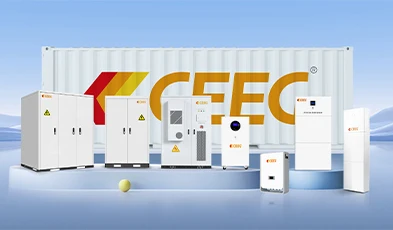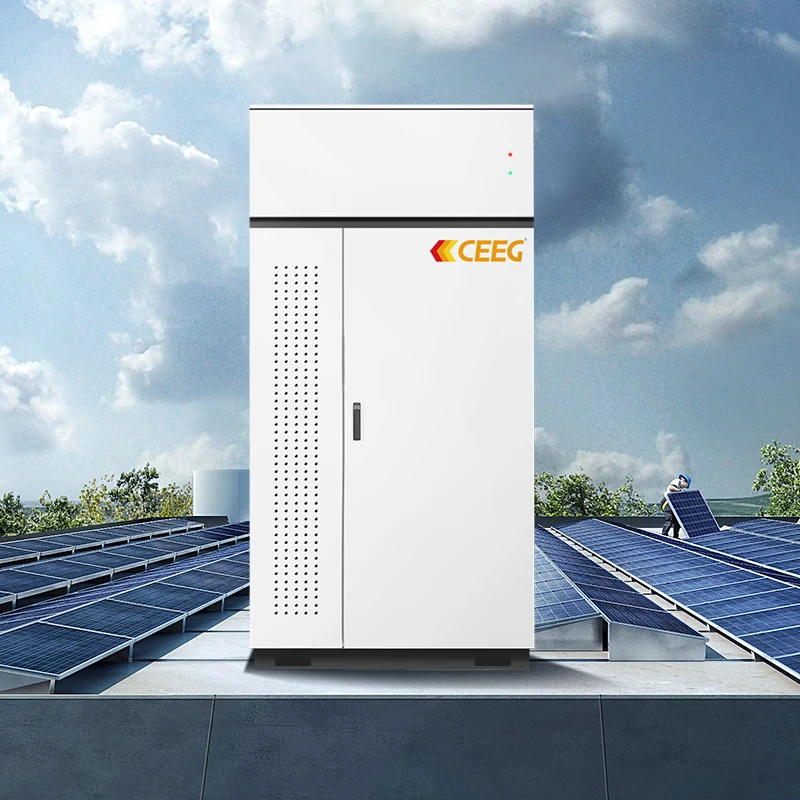Energy storage refers to the process of storing energy through a medium or device and releasing it when needed. It achieves the matching of production capacity and energy consumption in time and space through flexible charge and discharge control, which is the basis of flexibility.
From the perspective of the power system, energy storage can be divided into power generation side/power supply side, grid side, and user side energy storage, among which power supply side and grid side energy storage are also called pre-meter energy storage or large storage.
Pre-meter energy storage refers to energy storage that is directly connected to the power grid and has independent power and electricity meters; conversely, it is post-meter energy storage, and user-side energy storage is also called post-meter energy storage. User-side energy storage is divided into industrial and commercial energy storage and household energy storage.
From the perspective of business model, pre-meter energy storage should have an independent market entity identity, independently participate in market quotation, directly accept dispatch, and independently settle, and can also be called independent energy storage.
Domestic user-side energy storage mainly refers to energy storage systems used in a large number of industrial and commercial customers. Energy storage equipment can be simply understood as a large power bank. It charges when electricity prices are low and discharges when electricity prices are high for corporate production, earning peak-valley electricity price differences, thereby reducing corporate electricity costs.
Peak regulation is to transfer excess electricity from places with low electricity consumption to areas with insufficient electricity. Because electricity cannot be stored on a large scale, it is generally used as much as it is generated. When the power generation in a region remains unchanged, and the electricity here cannot be used up, it is necessary to dispatch the excess electricity to areas with insufficient electricity, or it is the common pumped storage.
Frequency modulation is because the rated frequency stipulated in our country is 50Hz, but the electrical appliances in production and life are complex and diverse, and the startup and operation of machines will affect the frequency of the power grid, which requires frequency modulation to improve the quality of electricity.
An energy storage system mainly includes battery cells, PCS, BMS, EMS, temperature control, and fire protection.
PCS (Power Conversion System) is an energy storage converter, which realizes the power conversion between the power grid and the battery, and monitors and manages the exchange process. It can control the charging and discharging process of the battery, perform AC/DC conversion, and directly supply power to the AC load without a power grid. PCS consists of DC/AC bidirectional converters, control units, etc.
BMS (Battery Management System) is a battery management system, which is mainly used for monitoring, calculation, communication and protection of battery packs. It mainly consists of battery management chips, analog front ends, embedded microprocessors, and embedded software.
EMS (Energy Management System) is an energy management system, which can realize real-time monitoring and intelligent management of various devices in the system. It realizes data collection, storage, processing, uploading, operation control, operation strategy formulation, etc., and conducts overall information-based monitoring and management.
"MW" is the unit of PCS, which refers to the power that can be input or output for a given electrochemical energy storage device under certain time conditions. The units are W, kW, MW, GW, and the conversion ratio is 1:1000.
"MWh" is the unit of battery capacity, which refers to the amount of electricity discharged by the battery under certain conditions, and is also one of the important performance indicators for measuring battery performance. The units are Wh, kWh, MWh, GWh, and TWh, and the conversion ratio is 1:1000.
DoD (Depth of Discharge) stands for the depth of charge and discharge, which is an indicator used to describe the degree of battery capacity utilization during the charging and discharging process of the energy storage system. It indicates the percentage of the battery's discharged capacity relative to the total battery capacity. The smaller the number, the shallower the discharge. For example, a battery with a capacity of 5 kilowatt-hours (kWh) and a maximum discharge capacity of 4 kWh is allowed, the depth of discharge is 80%.
Four major sources of revenue for industrial and commercial energy storage:
(1) Peak shaving and valley filling: Utilize the difference between peak and valley electricity prices to charge during valley and flat periods and discharge during peak and peak periods to reduce the company's electricity costs. (Currently, more than 90% of revenue comes from this)
(2) Balancing demand charges: Energy storage systems can shave peaks and valleys, eliminate peak loads, smooth the electricity curve, and reduce demand charges.
(3) Dynamic capacity expansion: The user's transformer capacity is fixed. Generally, when the user needs the transformer to operate at overload during a certain period of time, the transformer capacity needs to be expanded. After installing a matching energy storage system, the transformer load can be reduced during this period through energy storage discharge, thereby reducing the cost of transformer capacity expansion and transformation.
(4) Demand-side response: After installing the energy storage system, if the power grid issues a demand response, the customer does not need to limit power or pay high electricity bills during that period. Instead, it is possible to participate in demand response transactions through the energy storage system and obtain additional compensation.
Q: How do we achieve "peak shaving and valley filling" through energy storage?
A: Energy time shifting is to achieve peak shaving and valley filling of power load through energy storage, that is, users charge the battery during the low load period and release the stored electricity during the peak load period.
The energy storage system is like a "reservoir" that can achieve energy time shifting. When the photovoltaic power generation output is large, the electricity that cannot be used temporarily will be stored in the battery. When the photovoltaic power generation output is insufficient, the electricity in the battery will be released to the power load for use, realizing the "peak shaving and valley filling" of photovoltaic power, maximizing the proportion of photovoltaic power generation for self-use, minimizing electricity costs, and helping enterprises reduce carbon emissions.
Q: How do we reduce capacity and demand for owners by configuring industrial and commercial energy storage?
A: Reducing capacity and demand means reducing the overall capacity demand of transformers through energy storage systems, thereby reducing the cost of transformer expansion construction and the later fixed capacity electricity charges or maximum demand electricity charges.
my country adopts a two-part electricity price for large industrial electricity with a receiving transformer capacity of 315 kV or above. The two-part electricity price includes the electricity price for electricity quantity and the electricity price for capacity. The electricity price for electricity quantity is calculated based on the actual electricity consumption of the user, and the electricity price for capacity can be calculated based on the fixed capacity of the transformer or the maximum demand of the transformer. The two electricity charges are calculated separately and added together to obtain the total electricity charge payable by the user.
After the enterprise installs the energy storage system, the power of the energy storage machine can replace part of the transformer capacity to supply power to the load, which plays a role in smoothing the load power peak and reducing the overall capacity demand, thereby reducing the transformer construction cost and the later capacity electricity fee.
Taking the configuration of a 300kW energy storage system as an example, when billing on demand, the energy storage system can release 300kW of power to offset the peak load impact (equivalent to adding a 300kW transformer). The demand-based charge is 40 yuan/(kW.month). The 300kW energy storage system saves the owner 300×40=12,000 yuan in demand fees every month.
Q: How can industrial and commercial energy storage achieve dynamic capacity expansion?
A: The user's transformer capacity is fixed. Generally speaking, when the user needs the transformer to be overloaded during a certain period of time, the transformer needs to be expanded. Generally speaking, there are two ways to increase capacity: one is static capacity expansion, and the other is dynamic capacity expansion.
Static capacity expansion refers to applying to the power bureau for a larger transformer, but this method is very expensive.
Dynamic capacity expansion is achieved by installing an energy storage system. The energy storage system can store and discharge energy during the overload period of the transformer, reducing the transformer load, and there by reducing the cost of transformer capacity expansion and transformation. The energy storage system can not only greatly reduce costs, but also increase profits through peak-valley arbitrage.
 Search
Search
 EN
EN














